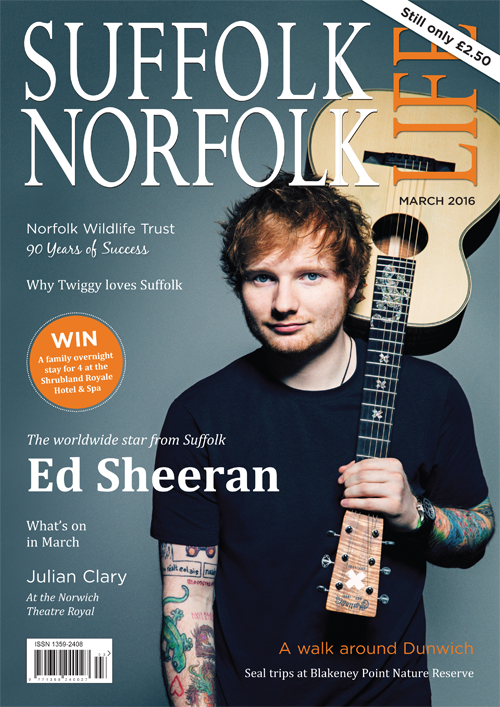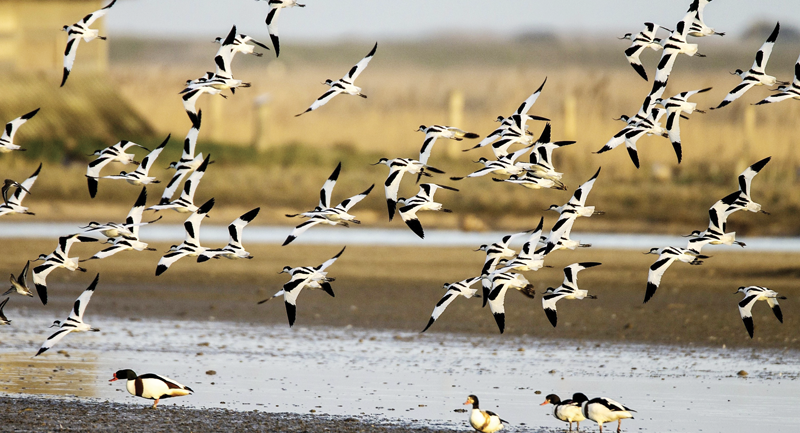- A feature from the March 2016 issue of Suffolk Norfolk Life magazine
 Click to view this issue »
Click to view this issue » - Category
- Nature
Laurie Forsyth talks to Norfolk Wildlife Trust, founder member of the wildlife trust movement
The year 1926 was the year of the General Strike, when A A Milne published his first Winnie the Pooh book, and Sir David Attenborough was born. But something else happened. A group of naturalists bought 420 acres of marshland at Cley, and it became a nature reserve under the protection of the newly formed Norfolk Naturalists’ Trust (NNT.) This year, the trust – now Norfolk Wildlife Trust (NWT) – celebrates its 90th birthday. By far the UK’s oldest county wildlife trust, it has over fifty nature reserves, six thriving visitor centres, more than 70 staff, 1,000 volunteers, and over 35,000 members served by eight local branch groups.
The long history of Norfolk Wildlife Trust is rich in momentous events made possible by committed and loyal people. Cley Marshes –the trust’s first nature reserve – is still wardened by the legendary Bishop family, in an unbroken 90-year lineage stretching from 1926 to the present day. Billy Bishop loved the Norfolk marshes and their wildlife, and devoted forty years of his life to their protection: his son and grandson are branches off the same tough Norfolk oak. You need people like that, and NWT has attracted them for decades. The founders of the embryonic NNT in 1926 shared a vision. They wanted full protection for Norfolk’s wildlife – and not just on the coast, but also in the fenlands, marshes, woods, heaths and farmlands across the entire county.
By 1928, NNT was focused on the Norfolk Broads.
In acquiring Starch Marsh, Martham, as its second nature reserve, the trust secured the future of breeding marsh harrier and bittern: in 1930, Alderfen Broad in the Ant Valley became the third reserve. Winter shooting was banned there, in a step to increase the population of breeding duck. These early acquisitions are remarkable in hindsight, because when the key decisions were made, it was on a wing and a prayer, for no funding was in sight. Alerted by trust founder Sydney Long to losses of sites in the unique Brecklands, and the need to protect some of the survivors, in 1932 NNT bought three cottages in Lakenheath. Their ownership bestowed commoners’ rights – and a veto on any future plans to develop wonderful Lakenheath Warren. It was a good and ingenious plan, but it was overtaken by a greater national priority in the government requisition of Lakenheath Warren as an airbase. It was a tragedy for wildlife conservation in the Brecks. Since then, the trust has acquired other fine Breckland reserves, especially East Wretham Heath in the early 1940s, where Sydney Long had loved to see his first wheatears of the year.
Just two years later, NNT’s presence in the Brecks was strengthened by a purchase made possible by Christopher Cadbury, one of the trust’s most generous and effective fundraisers. His dynamic financial support led to 300 acres of land being bought for the first nature reserve at Weeting: ‘to form an oasis for the Norfolk, (stone curlew) ringed and green plover (lapwing) to continue to nest there’. As the war ended in 1945, Christopher Cadbury’s financial and strategic support led to the purchase of 715 acres of land at Hickling from the family of the late Lord Desborough, followed soon after by the lease of a further 500 acres from other owners to create a large nature reserve of international importance.

